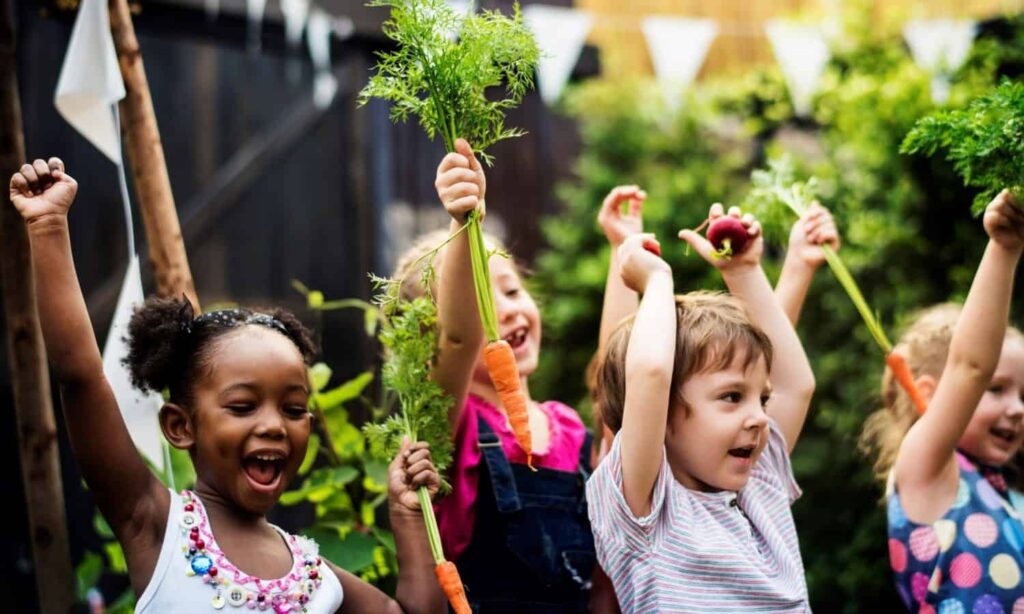|
Happy New Year to you all! We want to thank each and every one of you for your time, knowledge, energy, and presence this past year. Here is a reminder of what that has looked like. As we transition into 2025 together, it’s important to reflect on the foundation of our work, and why we are here. So let’s take a moment to talk about Farm to School!
Farm to school connects children to local agriculture through local procurement by using locally grown foods in meals, snacks and Child Nutrition Programs, helping educators and students grow their own food in school gardens and hands-on learning about food and agriculture by providing experiential education through farm field trips, cooking in the classroom and more. When farmers and growers connect directly with schools there are many opportunities to advance and enrich farm to school activities.

Here’s a sample of some resources, opportunities and tips to help connect farmers and growers with students and schools:
Involving farmers and growers in school activities:
- Procure food from local farmers and growers to serve in school meals. Utilize PA Harvest of the Month materials to highlight the featured foods and invite farmers to the cafeteria when their products are served! Check out this PA Farm to School Success Story to learn how one farmer connected with her local school district to serve meat and produce in school lunches.
- Classroom farmer visits: Invite a farmer to talk to your students about agriculture and possible careers!
- Farm field trips: Farm tours are a wonderful way for students to learn more about local agriculture. If going to a farm isn’t an option, check out our virtual farm tour series to bring the farm to your school, site, or home!
- Producer resource: Meet a school food service director and start to build a working relationship. A great first question to ask is “What local foods would you be interested in purchasing and serving?” Check out the Bringing the Farm to School: Agriculture Producers Toolkit for resources and tips
Getting support from food aggregators, distributors and other facilitators:
- Consider working with a local food hub like The Common Market, a regional food distributor that connects schools with local farms and quality food.
- Check out USDA’s Procuring Local Foods webpage for information and guidance on getting started
Connecting with local community organizations:
- Pennsylvania SNAP-Ed partners may be able to facilitate a connection with local farmers. Many work with farmers for educational purposes such as farm stands and farmer-in-the-classroom lessons and can connect you with a farmer in your area.
- Check out Local Harvest: A resource to locate farmers markets, family farms, CSAs, farm stands, and u-pick produce in your neighborhood.
Explore our resource page to learn more about the connections between growers and students in schools and Early Care and Education settings.

|

